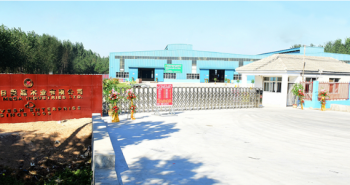how plywood is made
1. Hydrothermal wood logs processing
Wood logs which are the raw material for plywood manufacturing undergo hydrothermal processing. The hydrothermal processing is carried out in soaking pools filled with water at a temperature of 40–60°C depending on the wood species. Next, through mechanical debarking, the logs are cleared of bark and mineral residues accumulated in the bark during the process of logging and transport.
2. Peeling
A cut to size wood log is delivered to a rotary peeling machine. Once fitted at a right angle against in rotary lathe, a log is being rotated against a blade. The peeling blade cuts a layer of veneer in the form of a veneer band.
3. Drying and surface repairing of veneers
At this stage veneers have a moisture content of 30–120%. In order to reduce the moisture to the required level, veneers are dried in a continuous process in a band drying facility or as sheets in roller drying facilities, at a temperature of 160–180°C, to reach the desired moisture content of about 8 – 12%. Any veneer defects caused by the wood anatomy (e.g. knots, close shakes, bud traces, etc. ) are identified by using specialist scanning systems. Such surface defects are repaired with veneer inserts or chocks that match in colour and woodgrain pattern.
4. Adhesive application and plywood sets assembly
The sets of face and core veneers are assembled by selecting and arranging veneer sheets in a proper way. Depending on the intended use of the final product and a customer’s requirements, the sheets are laid cross-grained in a classic way, cross- and parallel-grained or parallel-grained in relation to each other. The adhesive is applied on both sides onto every second sheet of veneer. The type of the adhesive compound determines the type of bonding used for the specific plywood.
5. Hot pressing
The sets of veneers are hot-pressed under pressure in hydraulic multi-platen presses. The veneers are pressed together and from now are permanently bonded.
6. Final processing and sanding
Following the seasoning of plywood, the plywood sheets are finally processed and cut to target size with the excess material cut off on a profiling machine. Next the surfaces of face veneers are calibrated and sanded in a precise sanding machine.
7. Overlaying, filming, surface treatment
If required by the end application of plywood panel, at this stage in the process a special paper impregnated with resin (also referred to as film) is applied onto the surface of plywood board. This process is carried out in high pressure and high temperature environment, causing the resin to pass to the core veneers and, as a result, to produce a surface with new performance properties.
8. Quality inspection and grade sorting
Sorting of plywood is based on quality inspection and classification of plywood face veneers in line with quality systems’ requirements, technical standards and specifications.

